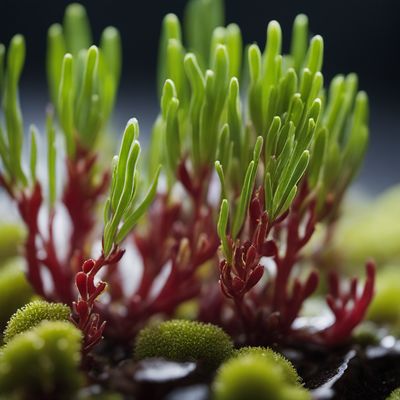
Ingredient
Agretti
The Verdant Delight: Exploring the Unique World of Agretti
Agretti is a leafy green vegetable with long, thin, and succulent leaves that resemble chives. Its vibrant green color and delicate texture make it a visually appealing addition to dishes. Agretti has a unique taste, combining the flavors of spinach, asparagus, and saltwater, with a hint of citrus. Its tender leaves offer a pleasant crunch, while its succulent stems provide a juicy and refreshing bite. This versatile ingredient can be enjoyed raw or cooked, adding a refreshing and tangy element to salads, stir-fries, pasta dishes, and more.
Origins and history
Agretti has its origins in the Mediterranean region, particularly in Italy. It has been cultivated for centuries and is deeply rooted in Italian culinary traditions. Historically, agretti was grown by monks in their gardens, hence its alternative name "monk's beard." Over time, it has gained popularity beyond Italy and is now enjoyed in various cuisines around the world.
Nutritional information
Agretti is a nutrient-dense ingredient, rich in vitamins A, C, and K. It also provides essential minerals such as iron and calcium. With its low calorie content and high fiber content, agretti is a nutritious addition to a balanced diet.
Allergens
Agretti is not known to be a common allergen, making it suitable for most individuals. However, as with any food, individuals with specific allergies or sensitivities should exercise caution and consult with a healthcare professional if necessary.
How to select
When selecting agretti, look for fresh, vibrant green leaves and firm stems. Avoid any wilted or discolored leaves, as they indicate a loss of freshness. Additionally, choose agretti with thin and tender stems, as they are more desirable for culinary purposes.
Storage recommendations
To maintain the freshness and quality of agretti, store it in the refrigerator. Wrap the stems in a damp paper towel and place them in a plastic bag or container. Agretti can stay fresh for up to a week when stored properly.
How to produce
Agretti can be grown by amateur gardeners by sowing the seeds in well-drained soil with plenty of sunlight. It thrives in cool climates and requires regular watering to maintain its succulent texture.
Preparation tips
Before using agretti, rinse it thoroughly under cold water to remove any dirt or debris. Trim off the tough ends of the stems, if necessary. Agretti can be enjoyed raw in salads or lightly blanched or sautéed to preserve its vibrant color and delicate texture. It pairs well with citrus flavors, seafood, and creamy dressings.
Culinary uses
Agretti is commonly used in Italian cuisine, where it is often blanched and served as a side dish or incorporated into pasta dishes. It can also be added to salads, stir-fries, omelets, and risottos to provide a refreshing and tangy element.
Availability
Agretti is commonly available in Italy, particularly in regions such as Tuscany and Liguria. It is also cultivated in other Mediterranean countries and can be found in specialty grocery stores or farmers markets in some regions.
More ingredients from this category

Rock samphires
"The Coastal Delicacy: Exploring the Unique Flavors of Rock Samphires"

Glassworts
Glassworts: The Salty Succulents

Sea asters
The Ocean's Delight: Sea Asters

Winter purslanes
The Nutrient-Packed Green: Winter Purslanes

Hottentot fig
The Exotic Delight

Sea lavanders
Oceanic Delights

Purslanes
The Nutrient-Packed Green